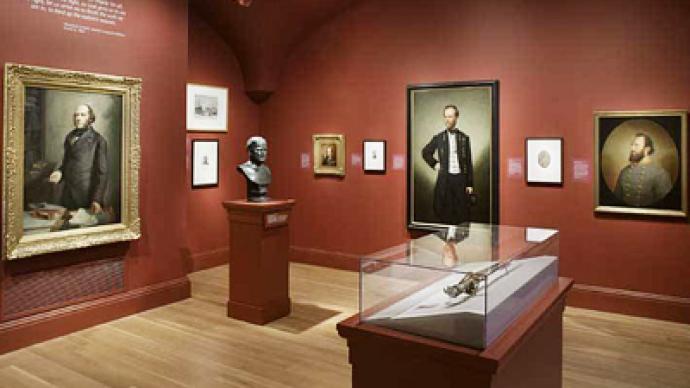Art work deemed too offensive for DC Museum

The Hide/Seek exhibition at the Smithsonian’s National Portrait Gallery has been called unprecedented, the first of its kind, and groundbreaking.
It deals with themes like homosexuality, lust struggle and religion.Well, actually, not religion, not after a group of people found one work to be offensive. It’s a video called “Fire in My Belly,” and shows ants crawling on a crucifix. The artist, David Wojnarowicz, was expressing anger and concern over society’s apathy about AIDS. He later died of AIDS-related complications. The video was inside the National Portrait Gallery as part of the exhibition for more than a month, with no complaints. But then conservative activists started complaining, the blogosphere exploded, and in less than 24 hours, the video was removed.Rep. John Boehner was among lawmakers who threatened to pull funding for the Smithsonian Institution if the work was not removed.It now lives inside a trailer, with a sign outside that says, “The Museum of Censored Art.”Guests are welcomed to come in and see the remainder of the exhibit since they can no longer view it inside.“This kind of thing, censorship of any form, is abominable anyhow,” said Peter Hutchinson, a guest at the museum.“If you don’t like things, don’t look at them.”Instead, a handful of people, mostly conservative and religious activists, wanted to prevent anyone from looking at them.“They contacted members of Congress who were sympathetic to them and then threatened the Smithsonian’s funding over 11 seconds of video in a four-minute work,” said Michael Blasenstein, one of the organizers of the Museum of Censored Art.At first, Blasenstein tried to keep the video inside the museum, putting it on an iPad and wearing it around his neck. “I just stood there at the entrance to the exhibit,” he said.“And anyone who wanted could come up and look at it.”Within ten minutes, he was escorted out and is now banned from the Smithsonian for life. But, he said, it’s worth it.“These things are done in the name of the taxpayer but when people are coming in they see the Museum of Censored Art and they want to know what the government is trying to hide from them,” Blasenstein said.The government was more up front about what they wanted to hide in another work of art in DC’s union station.The artist who contributed the Roman Soldiers statues was informed they would need to cover up their “personal items” with shields.There was the Robert Maplethorpe exhibit, also in Washington, DC. It was exhibited at the Washington Project for the Arts after being banned from the Corcoran art gallery, once again because of a government official.Senator Jesse Helms put a stop to it being shown after threatening the national endowment for the arts.“He’s conservative. He wants to control people.He wants to control what people think.He wants to hide reality and I think he’s way off base.”Fast forward 21 years later, to a metal trailer with no heat and one work of art on display because a few people consider it sacrilegious.It is a sign, perhaps, that the freedom of speech clause in the constitution still has quite a bit of room for interpretation.












